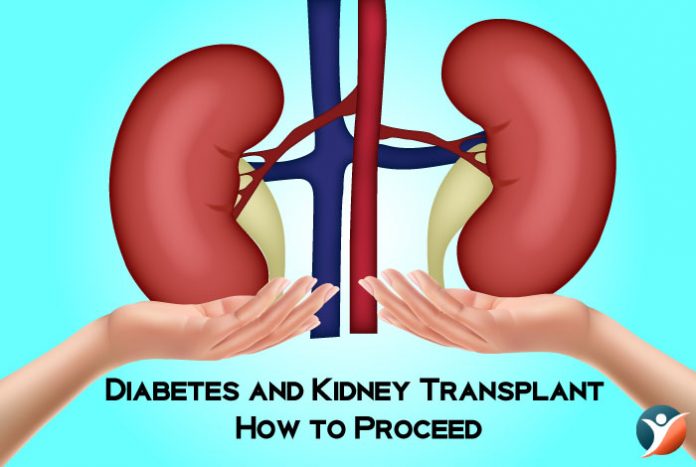
Table of Content
- Overview
- Statistical Facts Related to DKD and Kidney Transplant
- What Leads to End-Stage Renal Disease in Diabetes?
- Kidney Transplant in Diabetes Patients
- Success Rate of Kidney Transplant
- Risks and Complications Associated with Kidney Transplant
- Risk Factors of Diabetes After Kidney Transplant
- How Can Diabetics Avoid Kidney Transplant?
- How to Control and Prevent Diabetes After Kidney Transplant?
- Conclusion
Overview
Diabetes and kidney transplant are interrelated. In general, kidney transplant is suggested to patients with long-term diabetes, who are suffering from end-stage renal disease, which can be looked upon as an outcome of kidney-specific diabetes complication.
In simple words, kidney transplant is an option to restore kidney functions in diabetes patients, whose kidneys are damaged by the diabetes so badly that they stop working, leading to chronic kidney disease (CKD) or end-stage renal disease (ESRD).
Diabetes and kidney transplant are related to each other in two ways – pre-diagnosed diabetes before transplantation, and development of diabetes after transplantation, also known as post-transplantation diabetes mellitus (PTDM).
Kidney transplantation is a surgery-based implantation of a kidney from a human donor to a genetically non-identical human recipient. Besides dialysis, kidney transplantation can be another choice of renal replacement therapy for patients with end-stage renal disease; especially the ones, who don’t have any comorbid conditions that might create hurdle for transplant surgery and subsequent immunosuppression therapy to avoid organ rejection.
In case of diabetics, renal or kidney disease can be caused due to the diabetes itself or from other co-existing conditions. Kidney disease in diabetics is referred to as diabetic kidney disease (DKD).
Statistical Facts Related to DKD and Kidney Transplant:
As a matter of fact, diabetes kidney disease (DKD) is known to be one of the most-common long-term complications of diabetes. Also, over 35% of diabetics aged 20 years and above have CKD. In the Western countries, DKD is the major reason behind ESRD; contributing to around 45% of all ESRD cases.[1] In the U.S., about 40% patients suffering from type 1 diabetes and 5 to 15% of patients having type 2 diabetes ultimately develop CKD.[1]
As of 2007, out of newly-recorded CKD patients for kidney transplantation, 40% were diabetics. In case of Native Americans, this figure can be as high as 65%. It has also been estimated that around 5-25% of kidney transplant recipients without diabetes develop post-transplant diabetes mellitus (PTDM) each year. According to reports, nearly 4-25% of new kidney recipients develops new onset diabetes mellitus after transplant (NODAT).
Interestingly, the stats related to the survival rates of renal kidney transplant is better than that of dialysis in case of diabetes. At present, the survival percentage 5-years post-kidney transplantation among diabetic recipients in the U.S. is nearly 83%, which is just 33% in case of diabetics opting dialysis.
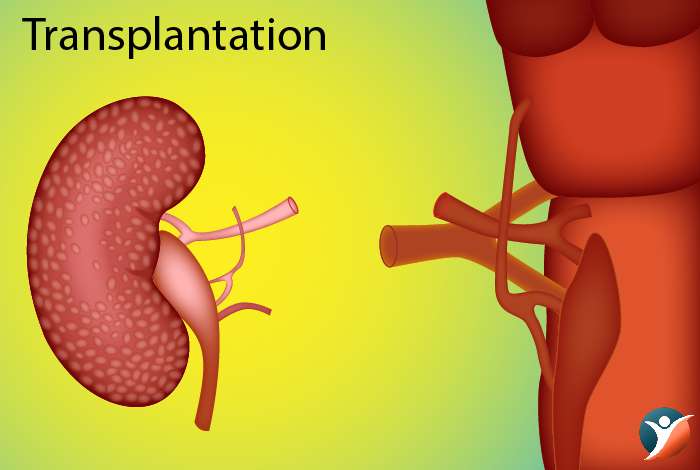
What Leads to End-Stage Renal Disease in Diabetes?
Persistent high blood sugar levels due to uncontrolled diabetes can destroy blood vessels in the kidneys. When these gets damaged, their function gets disrupted or they stop functioning altogether in the worst case. This eventually leads to chronic kidney disease (CKD), whose last stage is ESRD or kidney failure, which is a fatal condition, for which dialysis or kidney transplant is required to save the patient’s life.
In diabetic kidney disease, initially, there is a moderate rise in albuminuria – abnormal presence of albumin protein in the urine, i.e., 30-300 mg albumin/gm creatinine. Thereafter, a severe increase in albuminuria occurs (>300 mg albumin/gm creatinine). This further leads to renal insufficiency, characterized by increased blood urea nitrogen (BUN) and creatinine, ultimately resulting in CKD.
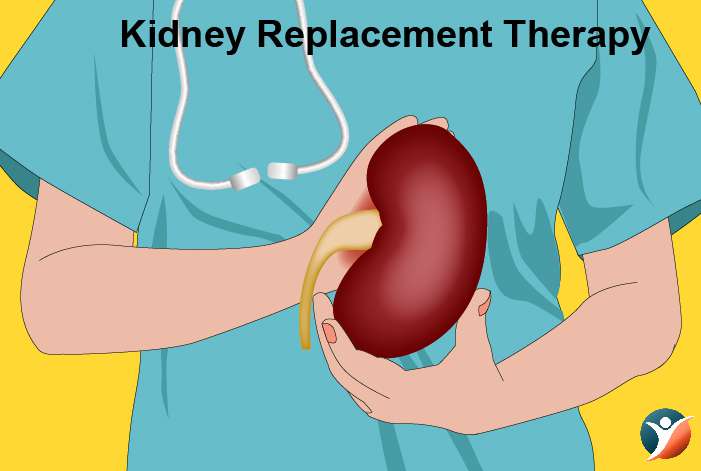
Kidney Transplant is Diabetes Patients:
Diabetics suffering from end-stage renal disease has an option to get a new kidney for their survival. The surgical kidney transplantation is mostly successful in cases, where the kidney donor is a living person, usually relative. However, the option of cadaver kidney is also there, wherein the donor is not related to the recipient and has just died.
Success Rate of Kidney Transplant:
As already mentioned, when it comes to renal replacement therapy, kidney transplant has better success rates than dialysis – both in case of diabetic and non-diabetic patients. Moreover, despite of being a much complex severe and procedure, kidney transplantation have way better survival rates than dialysis.
Our body is designed in a way that it can distinguish between its very own parts and foreign ones. To allow the body to accept the donor organ, herein a kidney, nephrologists try matching the recipient and donor for human leukocyte antigen (HLA), a blood protein. This matching is more important in case of a living donor as the role of matching HLA is lea clear in case of cadaver kidneys.

Risks and Complications Associated with Kidney Transplant:
The following risks are involved in surgical kidney transplant:
- Risks related to the surgery
- Risks associated with immunosuppressant medications to lower the function of our natural immune system
- Risks related to any damage to the transplanted kidney
Although complications related kidney transplantation develop in the first several months after the surgery, these may occur even years after the procedure.
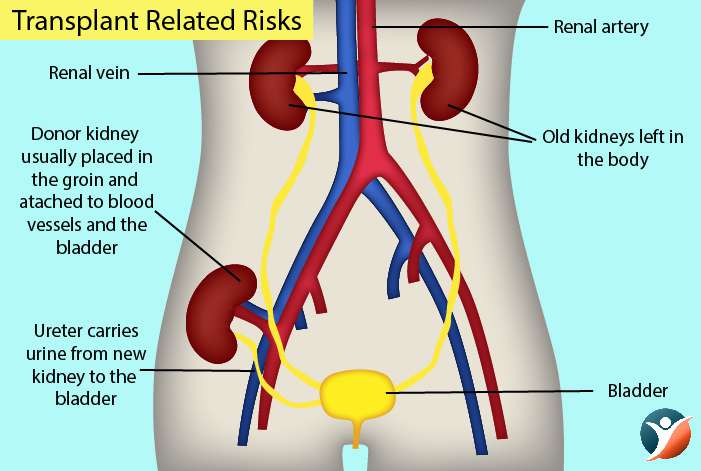
Short Term Complications:
- Infections: cold, flu and urinary tract infections (UTIs)
- Blood clots
- Arterial stenosis: narrowing of the artery connected to the transplanted kidney
- Blocking of ureter due to blood clot
- Leakage of Urine from the point, where the bladder connects to the ureter after surgery.
- Acute kidney rejection even after the use of immunosuppressants
Long-Tern Complications:
- Side Effects of Immunosuppressants: While immunosuppressants help prevent the immune system to attack the donated kidney, it may result in a number of side effects, including:
- Enhanced risk of diabetes
- Elevated risk of infections
- weight gain
- high blood pressure
- diarrhea
- abdominal pain
- hair loss or additional hair growth
- easy bleeding and bruising
- swollen gum
- mood swings
- bone thinning
- acne
- elevated risk of different types of cancers, particularly skin cancer
Diabetes: It is quite a common complication of undergoing a kidney transplant surgery; regardless of whether you have had diabetes prior to the surgery or not.
High-Blood Pressure: It is a frequently experienced long-term kidney transplant complication. People undergoing this surgery are already at a risk of having hypertension, and after the surgery, immunosuppressants can exacerbate the condition.
Cancer: Continued use of immunosuppressants can enhance your susceptibility to develop some types of cancer, especially the ones caused by viruses. These may include:
- Kaposi’s sarcoma: Affects both internal organs and the skin
- Melanoma and non-melanoma skin cancer
- Lymphoma

Risk Factors of Diabetes After Kidney Transplant
Reports suggest that nearly 5-25% of non-diabetic kidney recipients develop post-transplant diabetes mellitus (PTDM) each year. However, it is to be noted that new onset diabetes mellitus after transplant (NODAT) can also develop in case of liver, heart and lung transplantation.
An alarming fact about PTDM is that it is itself a leading and standalone factor responsible for organ rejection and poor survival of the organ recipients. Discussed below are several factors that can increase the risk of developing NODAT in kidney recipients, who were non-diabetic prior to the surgery:
- Age: It is regarded as the strongest of all factors. Patients aged 60 or above are at 2.6 times greater risk of having NODAT than their younger counterparts.
- Race: Hispanics and African Americans recipients have greater likelihood to have NODAT; possibly because of non-continuous genetic variations.
- Obesity: The risk of developing diabetes mellitus after surgery is 1.5 times higher in patients with BMI 25-30, and nearly double in people with BMI greater than 30.
- Medicines: Immunosuppressants, including tacrolimus and cyclosporine increase the risk of NODAT. Moreover, long-term use of glucocorticoids may lead to high blood sugar (hyperglycemia) in some recipients. It can also develop insulin resistance, thereby causing glucose intolerance and diabetes.
- Family History: It is an independent risk factor that can increase your likelihood of developing NODAT after kidney transplant.
- Human Leukocyte Antigen (HLA) Mismatch: A mismatch for B27 and DR HLAs is believed to be linked with elevated risk of developing NODAT after the surgery.
- Infections: Hepatitis C virus (HCV) infection is known to be associated with post- and pre-transplant diabetes. Studies have shown that Cytomegalovirus (CMV) infection also enhances the risk of NODAT.
- Other Kidney Disease: Polycystic kidney disease can also up the risk of NODAT.
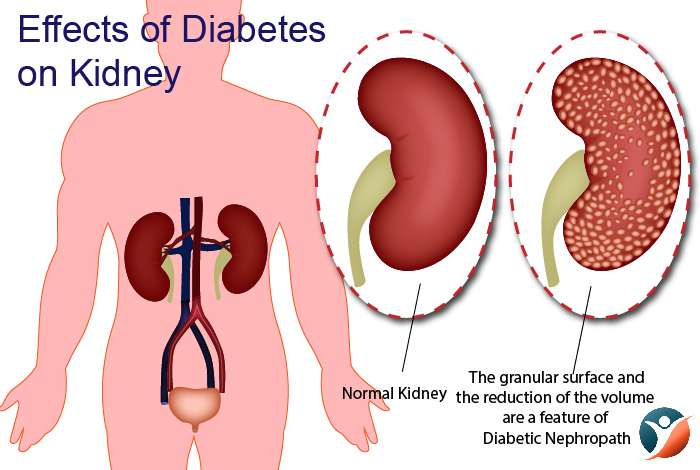
How Can Diabetics Avoid Kidney Transplant?
A diabetic can avoid kidney transplant or any renal replacement therapy by preventing diabetic kidney disease (DKD), which may lead to ESRRD, for which kidney transplant or dialysis is the only option to secure life of the patient.
Thus, by taking good care of their kidneys, diabetics can prevent the development of DBK, which is a common complication of diabetes. Following measures can be taken to protect the kidneys if you have diabetes:
Focus on Achieving Your Blood Sugar Goals
Besides, normal glucose level monitoring, your doctor may ask you go for A1C test, which tells your average blood glucose level for the last 3 months. For many diabetics, the A1C goal is under 7%, so discuss your A1C goal with your diabetologist, and plan accordingly to meet the goal as this will help you protect your kidneys from various disease and help them function properly.
Manage Blood Pressure:
High blood pressure can exert pressure on your heart, making it work beyond its capacity. This may increase your risk of stroke, heart attack and even kidney disease.
If you have high blood pressure along with diabetes, talk to your physician without delay to know your blood pressure goal. For most of the diabetics, the blood pressure goal is under 140/90 mm Hg.
Fortunately, medicines to normalize blood pressure have a protective effect on the kidneys, i.e., slow down kidney damage. Two blood pressure medications, namely angiotensin receptor blockers and angiotensin-converting enzyme (ACE) inhibitors, belong to this category. Both the medicines have been found to slow down kidney damage in diabetics with DKD and high blood pressure. However, it is important to know that these medications aren’t safe for pregnant women.
Follow a Healthy Lifestyle:
Not only this will help you control blood glucose level and blood pressure, but keep you overall fit and healthy. Diabetic can take following measures to ensure the good health of his/her kidneys:
- Follow a diabetes meal plan, while limiting the intake of salt and sodium
- Quit smoking
- Exercise regularly or indulge in some kind of physical activity daily
- Maintain a healthy weight
- Try having a quality sleep of at least 7-8 hours in a day
Be Regular and Punctual With Medicines:
Medications, either to control blood glucose level or blood pressure, are important part of your diabetes management and kidney prevention plan. Avoid skipping or forgetting any dose, and be regular with the dosage timings as suggested by your diabetologist.
How to Control and Prevent Diabetes After Kidney Transplant?
If diabetes develops after kidney transplant in a non-diabetic organ recipient, then it is called new onset diabetes mellitus after transplant (NODAT). Although it occurs as a side effect of the medicines used to prevent new organ rejection by the recipient body, it can be managed or prevent diabetes after the transplant.[1]
A person, who have undergone a kidney transplant can do the following to control and prevent diabetes:
- Remain physically active on a daily basis
- Eat healthy meals
- Maintain healthy body weight
- Keep normal level of blood glucose levels, blood pressure and body fat
- Be regularly tested for diabetes

Conclusion
Diabetes is a chronic disorder, which if left untreated or not uncontrolled can lead an array of complications, including diabetic kidney disease, which in severe cases can tun into chronic kidney disease (CKD) or end-stage renal disease (ESRD).
Renal replacement therapy like dialysis or kidney transplantation is necessary to prevent kidney failure, which is a fatal condition. Owing to its high success as well as survival rates, kidney transplantation is preferred over dialysis.
However, despite better patient outcomes, kidney transplant has several risk factors and complications associated with it with new onset diabetes mellitus after transplant (NODAT) being the most common one, which even a non-diabetic can develop after the transplantation surgery.
Thus, diabetes can lead to a situation, wherein kidney transplant may be required, and kidney transplant in itself may give rise diabetes mellitus. By protecting his/her kidneys, a diabetic can lower the chances of developing DKD and further deterioration of his/her condition.
Thankfully, there are ways to effectively manage and prevent pre-and post-surgical diabetes that include following a healthy lifestyle, having control over blood glucose level and blood pressure, consuming a diabetes diet and indulging in physical activities on a daily basis.
Hence, it can be concluded that diabetes and kidney transplant are interrelated and all efforts must be made by diabetics beforehand to protect their kidneys and avoid situations, wherein they might require kidney transplant.




